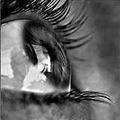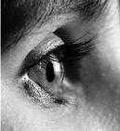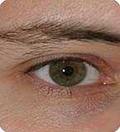Lower Eyelid Surgery
 |
 |
 |
 |
 |
 |
Lower eyelid surgery is a common cosmetic procedure that is done by thousands of people each year. In this type of cosmetic surgery, a plastic surgeon will tighten up the eyelid directly underneath your eye, possibly removing some extra skin or fat in the process to reduce sagging and maintain a healthy, youthful appearance.
Eyelid surgery, or blepharoplasty, is relatively risk free compared to other forms of invasive cosmetic surgery, but it still carries with it a risk of infection or complications. Because of this, be sure to follow the instructions of your surgeon to the letter to keep your recovery time as expedient as possible. Aside from the surgery itself, there are some other considerations that you should probably keep in mind as well.
 |
 |
 |
 |
 |
 |
One of the most important decisions in lower eyelid surgery, aside from the decision to actually get the treatment, is choosing a surgeon who has received his certification from the American Board of Facial Plastic and Reconstructive Surgery. The ABFPRS maintains the strictest membership policies, ensuring that every surgeon certified by their board has undergone the appropriate training and has kept up with all of the recent changes and developments in facial surgery. This way you know you're getting someone who has been trained to do his or her job well. It may be less expensive to go to a non-certified surgeon, but is that a risk you really want to take with your face?
The lower eyelid surgery itself is actually very short. Depending on the amount of work that you are having done you should only expect to be on the operating table for no longer than an hour and a half. Sometimes the procedure is completed in only half an hour, especially if you're only receiving minor modifications to your eyelids. The location of the surgery again depends on the type of surgery as well as the surgeon himself. Some facial reconstruction surgeons work in a hospital on an outpatient relationship while others operate their own third party clinic where everything is completed in house.
Before meeting with the surgeon, you'll have a brief consultation with an anesthesiologist to make sure you're properly sedated for the operation. You won't be unconscious during the procedure, but you will likely be given a mild oral tranquilizer such as a Valium to keep you from getting too nervous. Throughout the lower eyelid surgery all of your vital signs, including your breathing, blood pressure, and oxygen blood levels, will be closely monitored by equipment, and you might have an IV line put in to keep you anesthetized. Once the surgery is underway, there will be an eye guard in place to protect your eyesight. It basically resembles a big contact lens.
During the lower eye lid surgery the surgeon will make small, carefully planned incisions around the lower lids of your eyes within the folds that appear naturally. This keeps the scars hidden once the surgery is done. Very few people have noticeable scars after going through lower blepharoplasty.
Subscribe to EyeSight Vision Care!, our monthly newsletter with in depth information to help you keep up to date on how to Protect Your Eyesight with a free bonus. Fill out the form below. You'll then receive an email asking you to confirm that you subscribed. You'll always have the option to unsubscribe at the click of your mouse.
More Information







